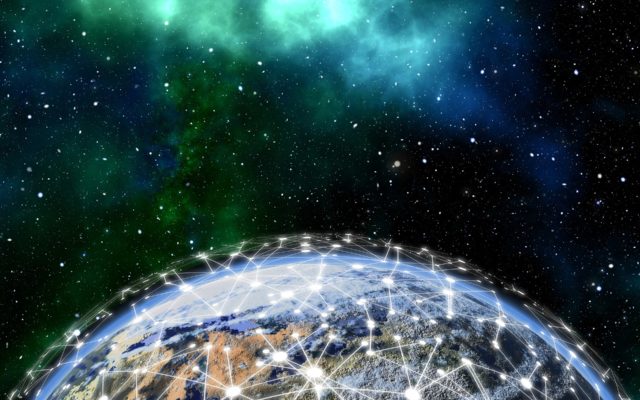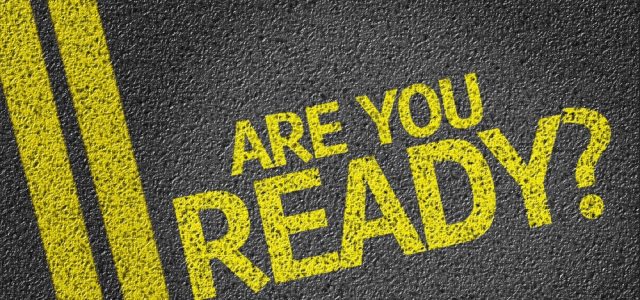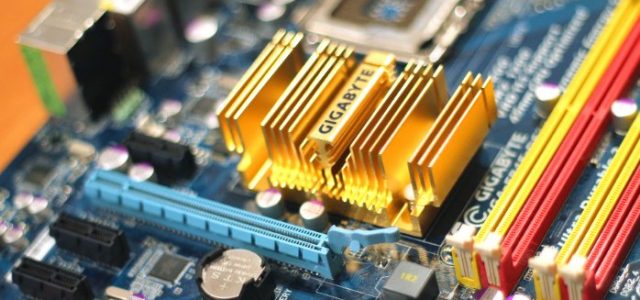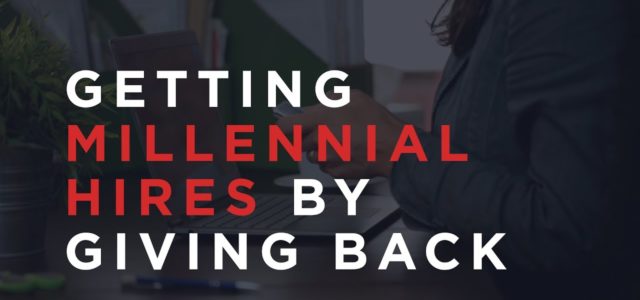Blockchain belongs to the (long?) list of buzzwords that are part of the growing hype surrounding new technology. Many people equate blockchain with Bitcoin, the first relatively mainstream cryptocurrency. For some, this association makes blockchain seem like something for hackers and illegal commerce, and far removed from typical B2B or B2C applications.
However, what many may not realize is that blockchain can have a significant impact on business because it can be a powerful tool in establishing trust. Trust is at the heart of business and drives:
- How we cooperate with other people (blockchain makes it easier to build trust in new business partners),
- How we automate activities (blockchain can ensure that a “machine/process” performs as expected)
- How we make decisions (blockchain creates more confidence in data),
What Is Blockchain?
Blockchain can be intimidating. It is a complex technology and understanding and explaining it is far from easy (I still haven’t entirely figured it out). However, for procurement and supply chain professionals, understanding what blockchain enables and the associated implications is much more important than knowing how it works. What makes blockchain so valuable is linked to how records are added to the database:
- A network of computers stores and verifies any new record, making the blockchain more robust than a single instance (like in most traditional databases),
- Every transaction (“block”) is linked to the previous one (“chain”), creating complete traceability and preventing any data alteration,
- It is decentralized (peer-to-peer), which means there is no authority deciding the rules or with a personal interest in manipulating data in one way or another.
Data in the blockchain is therefore immutable and impartial. It is shared among parties (publicly or privately) and cannot be changed by anyone.
“Protected from deletion, tampering, and revision. In this world, every agreement, every process, every task, and every payment would have a digital record and signature that could be identified, validated, stored, and shared. Intermediaries like lawyers, brokers, and bankers might no longer be necessary. Individuals, organizations, machines, and algorithms would freely transact and interact with one another with little friction. This is the immense potential of blockchain.”
The Truth About Blockchain, Harvard Business Review
Therefore, blockchain is a form of digital trust. More trust makes doing business easier, streamlines many processes, and creates transparency. Furthermore, and more importantly, it means that blockchain can serve as the backbone for new types of cooperation between machines (M2M) and between humans (H2H) that were, until now, limited by the cost of building trust or by a lack of trust altogether.
Businesses and business relationships stand to benefit significantly from what blockchain technology has to offer, and here are the main reasons for why procurement and supply chain professionals need to start taking notice:
1. Streamlining Operations
Beyond making transactions more secure and efficient by removing intermediaries, blockchain technology can also increase transparency in the supply chain. At each step of the value chain, from the extraction of raw materials to the customer, blockchain technology can store and record every transaction and exchange of ownership.
This would provide companies with a complete, trustworthy and traceable record that would facilitate and simplify the process of due diligence, which companies need to complete in order to ensure compliance with rules and regulations restricting illegal or unethical corporate activities (child labor, modern slavery, conflict minerals, product traceability, fraud, counterfeit, etc.). Not only would this streamline internal processes (increasing efficiency and reducing costs), it would also establish more trust between companies, suppliers, regulatory bodies and the consumer.
This is why many companies with a complex supply chain in industries with strict regulations and requirements related to product traceability (pharmaceutical, food & beverage, etc.) are already testing blockchain technology for that purpose.
2. Better Cooperation Between People
Blockchain can also enhance and improve Human-to-Human (H2H) cooperation because collaboration between people also relies on trust. This is particularly true when partners do not know each other, which is especially common in new business models (platform/ gig economy).
Identity and reputation are the two pillars of building trust. Because of its cryptographic nature, blockchain embeds mechanisms that ensure that users are who they say they are. That covers a user’s identity and extends to other credentials:
“Using the blockchain and strong cryptography, it is now possible to create a certification infrastructure that puts us in control of the full record of our achievements and accomplishments. It will allow us to share a digital degree with an employer while giving the employer complete trust that the degree was in fact issued to the person presenting it.” Certificates, Reputation, and the Blockchain, MIT Media Lab
Reputation is nothing more than the result of past transactions. As noted earlier, the blockchain logs all transactions securely and transparently. So, the blockchain makes it easy to measure and know someone’s reputation. Blockchain, therefore, makes it easier to do business with new partners by reducing the costs and risk which are often associated with new business relationships. Traditionally, a fear of risk and unexpected costs has been behind the rationale to aggregate spend towards a limited number of suppliers and/or to favor (consciously or unconsciously) incumbents. The use of blockchain can allow procurement organizations to revisit their category strategies!
3. Better Cooperation Between Machines
With blockchain organizations can:
- Trust the data stored in it,
- Create new data collection points by digitalizing more processes,
- Execute automated programs (called smart contracts).
This creates a distributed system (data + process) that they can trust (completeness, accuracy, authenticity, resilience). So, it is possible to automate further without being exposed to typical risks due to lack of data, poor/corrupted data, unreliable execution, interferences by third parties/intermediaries,…
Blockchain is the ideal infrastructure for machine-based activities that the Internet of Things (IoT) has been lacking. It opens the door to new “apps” that will run precisely as programmed. An immediate area of application that is relevant for Procurement is Supply Chain Management.
For example, companies can track the movements of a container at all times. Whenever it reaches specific points, the blockchain will record the activity and smart contracts will execute automated actions (e.g. registration for customs, payments,…). The same concept also extends to upstream/downstream activities like inventory tracking/management or ordering/requisitioning/replenishing.
4. Better Insights with the Convergence of IoT, AI, and Blockchain
“Blockchain and AI are the two extreme sides of the technology spectrum: one fostering centralized intelligence on close data platforms, the other promoting decentralized applications in an open-data environment. However, if we find an intelligent way to make them working together, the total positive externalities could be amplified in a blink.” The convergence of AI and Blockchain: what’s the deal?, Francesco Corea
When considering the Internet of Things (IoT) + Blockchain and adding Artificial Intelligence (AI) to the landscape, a bigger picture emerges that covers data, insights, and actionable intelligence: the core of business activities! When combined, these technologies represent an opportunity to address the “big data” challenge summed up in the “6 Vs”: Value, Volume, Variety, Velocity, Veracity, and Variability.
Some of the latest technologies represent critical components for building better insights and actionable intelligence:
- IoT = Provides the ability to collect more information (Volume) and in a real-time manner (Velocity & Variability). This is especially true when monitoring physical supply chains (e.g., sensors and geolocation for containers) and changing demand (e.g., sensors in machines for predictive maintenance). It is the foundation that makes gathering data possible and keeps the Big Data engine running and improving (e.g., machine learning).
- Big Data = Makes it possible to consolidate, aggregate, and slice more data coming from multiple sources (Variety), both internal (e.g., ERPs, or other information systems) and external (e.g., IoT sensors, third party data providers…).
- Blockchain = Increases trust and reliability (Veracity) in the data collected and stored which is a critical factor in trusting the insights and decisions derived from that data. It also creates a “data backbone” that can be utilized to create interoperability (internally and externally) opening the door to further automation and “interconnections” between physical and financial supply chains.
- AI = Exhibits tremendous computational capacity to analyze massive sets of data to build new knowledge (Value) and continuously learn and improve from new data.
Too Good to be True
Blockchain represents an important for the business world. Procurement organizations cannot afford to ignore it because it has the potential to open doors to further improvements from streamlining paper-based processes to enhancing cooperation and developing new strategies and supporting new operating/business models.
Despite the potential benefits, however, organizations should still make an informed decision about testing blockchain before rushing in. Blockchain is still a relatively new technology, and in addition to understanding the potential it holds, procurement organizations also need to understand the limitations and risks, which we will cover in our next article. Stay tuned!
Article by channel:
Everything you need to know about Digital Transformation
The best articles, news and events direct to your inbox
Read more articles tagged: Blockchain, Featured







